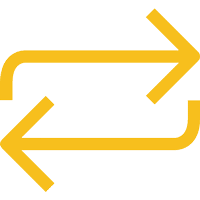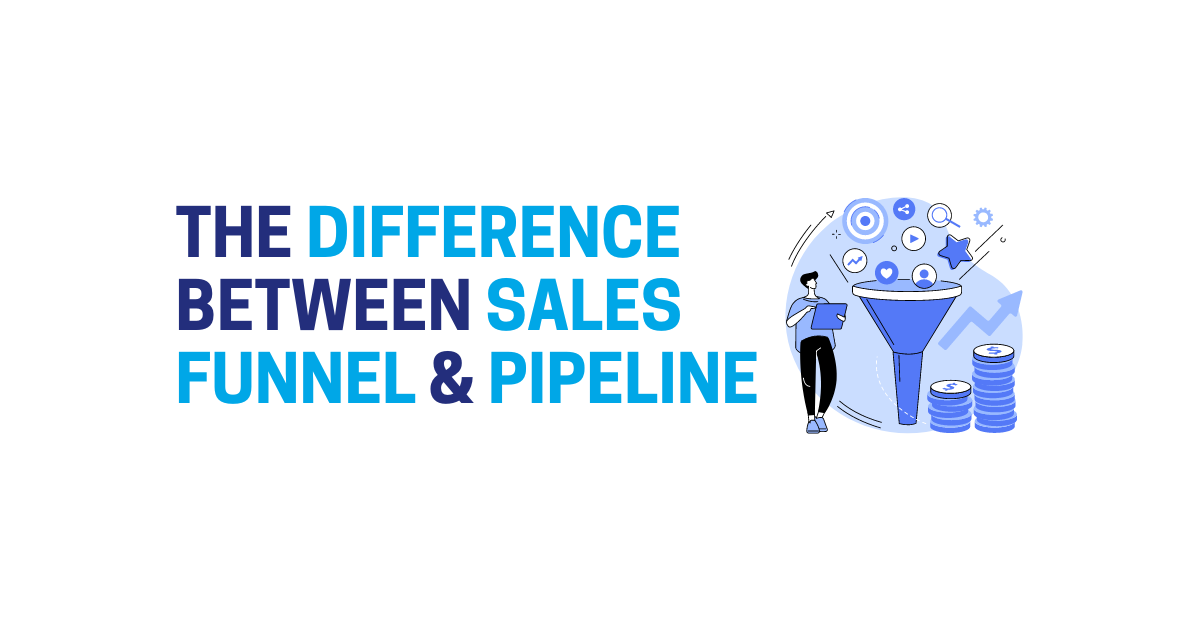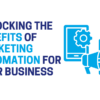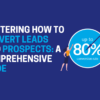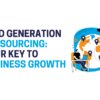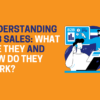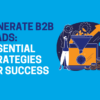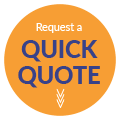Sales Funnel vs Sales Pipeline: Understanding the Difference
When researching marketing processes, you may have seen the terms sales funnel and sales pipeline used interchangeably. In reality, though, they are two distinct features that all marketers and business owners must understand.
Our sales lead generation services can help you master both aspects to take your B2B marketing communications to the next level. In this guide, we’ll discuss a range of topics including but not limited to;
- The definition of sales funnels and sales pipelines.
- Purposes of sales funnels and sales pipelines.
- Differences between a sales funnel and sales pipeline.
- How sales funnels and sales pipelines support your business.
Whether you intend to work with B2B sales lead generation companies or manage these key features of your strategy internally, the following advice will help.
Sales Funnel vs Sales Pipeline: Understanding the Terms
Before looking at the differences between a sales funnel and a sales pipeline, sales lead generators will help you understand the two terms so that you can get a better insight into how they work within your B2B telesales and telemarketing strategy or in-person endeavours. Let’s take a closer look.
Sales Pipelines Explained
The term sales pipeline describes a set of four distinct stages that a user completes on the path to conversion. In other words, the sales pipeline sees them move from the status of ‘lead’ to ‘customer’ and covers the key stages of the buyer’s journey from qualifying the lead to closing the sale.
It is called a pipeline because the user starts at the top of the pipeline and moves directly down the pipe until it reaches the bottom. In other words, buyers will complete each of the four stages in chronological order. They are;
- Qualify: Sales teams will determine whether a lead is a good fit for your product or service to identify leads that are likely to convert.
- Meet: Sales reps meet (in-person, online, or over the telephone) leads to discuss their pain points and gain a better understanding of their unique needs.
- Propose: As well as identifying the right products/services, the sales rep will provide a full quote covering costs, timeframes, and more.
- Close: This step converts the lead into a client and involves any final negotiations before reaching an agreement.
Some sales lead generators extend the pipeline to six stages, including a “prospecting” stage before qualifying leads as well as a stage for building a stronger relationship that falls between the meeting and proposal stages. However, the four-stage pipeline is easier to understand and use within the context of your initial B2B telesales and other sales processes – not least because you can always make the necessary modifications later on.
Sales Funnels Explained
The sales funnel is directly linked to the sales pipeline. However, it is a visual representation of the buyer’s path to conversion, essentially creating a report of both quantity and conversion rates at each of the four stages.
It takes its name from the fact that it looks like a funnel with a wide top and narrow bottom, which naturally occurs because for every 100 leads, only a percentage will move through each of the four stages while the fact that prospects can’t skip a stage means it is impossible for the base of the sales funnel to get wider than the top.
B2B sales lead generation companies use this to gain a better understanding of the sales pipeline and the actions that prospects take during each stage of their journey.
The Difference Between a Sales Pipeline and Sales Funnel
In the most basic sense, the difference between a sales pipeline and a sales funnel is fairly easy to define. The sales pipeline is the series of stages that the prospect moves through between the point of lead qualification and converted sale whereas the sales funnel is a series of reports connected to the pipeline that indicates the number of leads that pass through each state.
The visual representation of a pipeline versus a funnel really is the simplest explanation. The pipeline shows the journey that an individual user takes to reach the point of conversion whereas the funnel shows the number of leads that move through versus how many get stuck at a specific stage.
After successfully generating leads, it’s important that you understand both sales funnels and sales pipelines. The above definition only scratches the surface.
While sales pipelines often start with the four stages above, businesses and sales teams can adjust the pipeline in hopes of optimising performances. For example, new stages and actions may be added to give a better understanding of the buyer’s journey or identify potential areas of improvement.
Conversely, the sales funnel cannot be directly modified. Instead, all sales funnel stages and subsequent reports are directly influenced by the decisions that are made with the pipeline.
Another way to compare the two is that sales pipeline reports monitor every client interaction from the point of qualifying the lead up to the conversion. In this way, it tracks individual accounts and provides insight into each action as well as the next actions that a lead will take. At any given moment, sales teams can analyse the distribution of leads across each stage of the pipeline.
On the other hand, the sales funnel report can be used for sales forecasting as you’ll know the statistical probability of how many prospects will go through each stage while also pinpointing where prospects get stuck on the journey.
For example, if the sales funnel report shows that 20% of leads typically move from the proposal stage to the conversion phase, you can expect that 200 of the 1,000 currently in the proposal state will yield sales. Alternatively, if 75% of leads are moving from the meeting to the proposal but only 2% convert from there, it is clear to see which part of the sales process is currently letting you down.
The quantitative data of the sales funnel report gives meaning to the actions defined by the qualitative stages in the pipeline. So, while they ultimately move in the same direction, they help you gain different insights.
Sales Pipelines V Sales Funnels: How They Impact Sales Teams
When thinking about the difference between a sales pipeline and sales funnel, you should contextualise it by thinking about the way it influences sales teams.
Ultimately, you can define the difference as follows: sales funnels identify ‘where’ problems exist in the strategy whereas sales pipelines help highlight ‘why’.
If the sales funnel report shows that leads are simply not moving from one stage to the next, it shows that this is the area that needs addressing. It also allows teams to make accurate predictions based on the past data to see whether the company is likely to hit its sales revenue goals and calculate how many leads would be needed to meet them. That’s because the results are exclusively about volume.
With a sales pipeline, a sales lead generator can monitor a wide range of metrics to get a deeper understanding of the sales strategy. They include;
- Number of qualified leads.
- Average sales cycle.
- Average deal size.
- Sales per customer account.
- Client lifetime value.
- Sales per salesperson.
These details can be attributed to every stage of the pipeline too. So, if the time between two specific stages is causing the average sales cycle to become drawn out, this can be addressed. Similarly, if a sales agent is now showing the same win rate (conversions per 100 leads) as their colleagues, it should be investigated.
Incorporating automated sales funnel technology can also support agents to avoid mistakes like forgetting to follow up on a lead to arrange a meeting. This is because every interaction is tracked and analysed against the performances and objectives of the sales strategy. It will subsequently support daily sales habits and prevent the loss of qualified leads through neglect.
In many ways, then, the sales pipeline can enhance individual B2B interactions, not least through the introduction of modified or new actions whereas the sales funnel takes an overview of the entire strategy to establish winning tactics for sales teams across the company.
What About Marketing Funnels?
As well as sales funnels and sales pipelines, B2B sales lead generation companies and other relevant experts may introduce the term “marketing funnel” into the mix. While it would be very easy to confuse this with a sales funnel or assume that it is a direct contrast to it, the truth is that it is a separate entity that is ultimately designed to reflect the evolving relationship that a client has with a business.
Like sales funnels, the stages included may vary from one sales lead generator to the next. However, they are all built on AIDA principle (Awareness, Interest, Debate, and Action) to cover the top of funnel (TOFU), middle of funnel (MOFU), and bottom of funnel (BOFU) phases.
As with sales funnels, marketing funnels start wide at the top as this is where the most prospects are found. One of the most popular methods covers the five stages below;
- Awareness – a buyer becomes aware of the brand.
- Consideration – the buyer thinks about the products/services.
- Conversion – the buyer makes their initial purchase.
- Loyalty – the buyer makes further purchases.
- Advocacy – the buyer is loyal and tells others about the company.
So, you can see how the marketing funnel covers a different – albeit linked – journey than the sales funnel and sales pipeline. An alternative comparison is that the sales funnel tracks the situation from a business perspective whereas the marketing funnel monitors the journey from a client’s viewpoint. Naturally, simultaneously understanding both is the key to deeper insights and a better chance of optimising your strategies.
Sales vs Marketing Funnel: Which is More Effective?
Many businesses ask sales lead generators whether they should focus on sales funnels or marketing funnels. Ultimately, they serve different purposes and – as the names suggest – are used by different teams.
Marketing funnels include minimal customer interactions and focus on building product awareness with the target audience that ultimately leads to conversions. It is primarily used for content marketing, ads, and promotions.
Conversely, sales funnels focus on direct client interactions even at the TOFU stage with a view to identifying clear prospects and subsequently negotiating a deal. It additionally pays attention to developing the relationship with a client, which is particularly useful for B2B.
Ultimately, they should both be used, although B2B telesales experts will often suggest that sales funnels and pipelines have more value in this sector.
Using the Sales Pipeline and Sales Funnel Together
Given that B2B data is the cornerstone of effective marketing and sales strategies, it should be clear that both the sales pipeline and sales funnel should be used in conjunction to provide valuable insights into your sales strategy.
By using the data from your sales funnel report, you can spot key issues that may be holding you back. Sales teams can subsequently analyse this information to optimise various processes. Whether this means changing actions, communications or outreach strategies, it allows the business to map out the steps it will take to move prospects down the pipeline.
When combined with the ability to track individual client journeys and see where they are on the path to purchases, you should be able to improve conversion rates on both an individual and collective basis.
It should also be noted that different sales pipelines can be used to segregate various products or services, thus allowing you to optimise every element rather than generalised processes that might only work on certain audiences or in relation to specific products. It can be particularly useful if you have multi-tiered B2B services that require contrasting sales methods or when qualified leads come from varying sources – such as trade shows versus web contact forms.
Upgrade Your Sales Strategy Today
Whether it’s B2B telesales or any other channel, a defined pipeline and funnel will help you create a data-driven strategy built with immediate and long-term results in mind. Here at The Lead Generation Company, our comprehensive approach achieves this with the added benefit of a seamless integration into your overall business operations.
For further help in understanding the sales funnel and sales pipeline or implementing an efficient, data-driven B2B telesales process, contact our friendly team of expert sales lead generators today.

Ryan Whyte is a Director of The Lead Generation Company where he leads a team of B2B telemarketers to deliver high-quality leads for clients. With a strong background in campaign management and a focus on driving results, Ryan is dedicated to optimising strategies that maximise client success in B2B lead generation.





